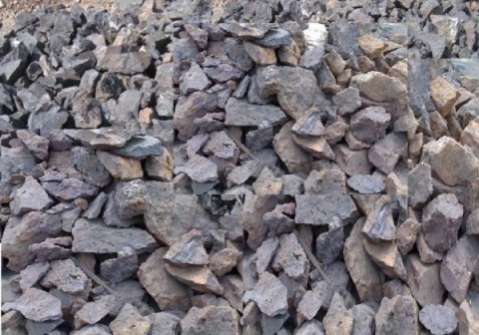FOR a long time the villagers of Shi Nkole village in Chief Mwewa’s area in Samfya District of Luapula Province lived poverty-stricken lives, depending largely on cassava and beans which they cultivated on a subsistence level. But in 2008, the villagers woke to the sound of earthmovers, excavators and talk of a charcoal-gray stone that lay beneath their land; a stone, they were made to believe, would turn their misery into fortune.
However, years of digging for manganese in the area by various companies have only left gaping holes in the ground – some the size of a football pitch – and a people no richer than before.
And worse still for others like Donald Musenge and Steven Chilando, the rush for manganese in their village left them crippled and unable to walk after a mine accident.
Both men narrate the events of that fateful day with deep emotions.
It happened on December 10, 2010. The two young men had only been on the job a couple of weeks when the accident happened.
Donald, 22, had recently sat for his grade nine examinations and was trying to raise money for school, while Steven, 30, was trying to provide for his four children and pregnant wife. Impoverished and with no means to earn a regular income, the promise of a KR400 pay per month was very luring.
But while working, the wall of a pit where they were digging collapsed on them.
One man was killed on the spot, crushed by the heavy boulder. Donald and Steven were lucky to survive, but they both sustained broken spines and had to be airlifted to Lusaka for specialist treatment.
However, even after spending several weeks in hospital, the paralysis that had set in their legs could not be reversed. Both men were confined to wheelchairs which were bought by the mining company they worked for.
Donald’s wheelchair, however, now lies broken and disused in the yard outside the family house, and he has to depend on his siblings to carry him around.
He made it to grade 10, but his condition could not allow him to continue attending school and so he never returned to class.
“I feel very sad because I really wanted to complete my education so that I can support my poor parents, but instead I have become a burden to them,” says Donald. He dreamt of becoming a doctor, but that dream seems shuttered for now.
Donald’s mother, Lydia, is angry and sees the manganese as a curse rather than a blessing.
“We looked up to him, but now he can’t do anything,” she says, pointing to her son.
Perhaps for Lydia, the pain is made worse by the fact that it was her husband who gave up the family land to the mining company. And it was her husband who recruited both Donald and Steven to go and work at the mine where he was employed as a foreman. It is not clear what transaction took place between the mining company and Mr Musenge, but Lydia says the family has not benefited in any way.
“We have not benefited anything from the mine from the time it started,” she says.
It is not hard to believe her claim. Standing around her is a hoard of children in tattered dirty clothes.
And there is nothing around her house to show for the mineral wealth taken out of the family land a few meters from her house.
At the time of our visit, Lydia’s husband had gone to sell some manganese in Mansa.
“But I’m sure he won’t come back with anything,” says Lydia with certainty. “It’s like that all the time.”
Those who manage to scrape small quantities of the mineral, usually from old pits, sell it to the mining firms at 40 ngwee per bucket – a meagre earning by any standards.
Not too long ago, the family lost even their few treasured belongings, including a few iron sheets, a television set and a DVD player, when some former workers who were owed money by the mining company decided to take the law into their own hands, grabbing the foreman’s valuable possessions since the owners of the mine disappeared from the area without paying them. A number of the mining companies digging manganese in this area are owned by faceless individuals using locals as fronts. This makes claims of compensation very difficult.
Mr Musenge is now facing a law suit from Steven, who is claiming compensation for the injuries he suffered. The tension between the two neighbouring families that once lived peaceably is palpable.
“We have no peace in this home now,” complains Lydia.
Rich deposits
There is nothing really new about the manganese deposits in the village of Shi Nkole, which is located about 70 kilometres west of Mansa.
Manganese occurs in a number of chiefdoms in Luapula Province, including Kalaba, Kalume Kepi, Lombe, Mwenda and Chisunka.
Manganese deposits in areas around Mansa were discovered by British settlers long before Zambia’s independence in 1964 and some pits date as far back as the 1950s. And so rich are the deposits that the outcrop of the mineral is visible in many places, including villages.
But it is Chief Chimese’s area that is said to have a very rich deposit of the mineral, thereby attracting an influx of mining companies, both legal and illegal.
According to records at the Ministry of Mines, Energy and Water Development, 32 mining licences have been issued in Luapula Province – mostly in Mansa and Samfya districts – since 1997.
Of the 35 licences, a total of 25 permits were issued in the period between 2010 and 2011 when the price of the metal on the international market peaked, thereby attracting more companies and individuals wanting to cash in on the mineral.
Export figures since 2008 also show a sharp rise in the export of manganese ore from 1,666 tonnes in 2008 to 609,310 tonnes in 2011. However the graph fell sharply in 2012 when the country exported 7,604 tonnes.
Back in the 1970s and 1980s when Zambia had a thriving manufacturing sector, much of the manganese mined in Mansa ended up at the battery factory, which, at the time, was the province’s main industry. But the battery factory was shut down in the 1990s when Zambia began pursuing the privatisation policy under the Movement for Multiparty Democracy led by late president Frederick Chiluba.
The factory now stands like a rusty monument of a once thriving economy in the district.
There was little talk about manganese in Luapula Province following the closure of Mansa Batteries until recently when China’s demand for manganese to feed its steel plants rose sharply, pushing the price of the metal upwards.
Most of the manganese mined in Luapula Province is now trucked to neighbouring Tanzania, before being shipped to China and India. South Africa is another export market for the mineral.
But in the villages where the metal is mined, the locals have misgivings about the people coming to mine the mineral in their area, accusing them of greed and selfishness.
Just about six kilometers south of Mansa town is an area that has become a hotbed for businessmen seeking a fortune in manganese mining, but it is also an area that has witnessed a growing conflict between the mining firms and the locals.
The affected villagers at Kabunda in Chief Chimese’s area have now formed an association called Tuilubule Kabunda Community Association to strengthen their voice against the invading mining companies. But their voice is still not strong enough.
“It’s because we are poor, that is why they don’t listen to us,” complains Luckson Bwanga, a 23-year-old man who lost part of his field due to the mining activities. “They look at us like we are not people at all.” John Chikamba leads the group at Kabunda, which comprises of about 30 households affected by the mining activities. Most of them have lost their cassava fields because they were situated in areas containing manganese.
Mr Chikamba, himself, lost part of his cassava crop when one of the mining companies made clearing for a road leading to one of its digging sites. He is still waiting for compensation from the mining company.
Like Lydia and her crippled son, the villagers at Kabunda say they have not seen any benefits of the mining taking place in their area.
Even the jobs, they say, were given to people from outside their chiefdom.
The communities in these manganese-rich areas have a number of social needs, but most critical is access to health facilities. In some cases, villagers have to walk for several kilometers to get to the nearest health post.
In July last year, the villagers wrote the Ministry of Mines, Energy and Water Development to complain about the conduct of the mining companies.
The villagers were also demanding that the mining companies be compelled to take up social responsibilities such as building of schools, clinics and roads in the areas where they were carrying out their activities.
The villagers are also concerned about the land degradation taking place in their fields. Unlike copper ore which usually occurs as a belt, manganese occurs in pockets, hence requiring random and unsystematic digging. Once the stone is exhausted, the diggers simply move to another site.
In one area near Kabunda, there were as many as six huge craters in a 200-metre radius. Some of the pits are so deep that they have now become permanent pools. However, during the rainy season, all the pits fill up with water. The villagers now fear for the safety of their children.
The villagers also accuse the mining companies of polluting their river as they wash their manganese upstream before taking it for sale.
To help address their concerns, Chief Chimese appealed to the Council of Churches in Zambia (CCZ) for help. This was during a meeting for chiefs organised by the church mother body held in Kabwe in June 2012. The CCZ, through its local structures in Mansa, responded in the affirmative and among others conducted an on-the-spot check and also held meetings with affected communities.
The government is also aware of the concerns raised by the villagers.
According to mines deputy minister, Richard Musukwa, the mining companies were told to backfill the pits once they dug out the ore, but perhaps that is a cost some companies are not ready to bear.
Chief Chimese says he has summoned the mining companies before to discuss development in his area, but he says they have always ignored him.
He now wants the government to give him power over the mining companies so that they would have to seek his permission before entering his chiefdom.
“They don’t come through me,” he says. “Sometimes I only come to hear about them after they have even left.”
But the law is already clear on that. According to the Mines and Minerals Development Act of 2008, under Article 127c, a holder of a license should only commence mining after obtaining a written consent of the chief and local authority of the area.
The law is also clear on compensation.
It states under Article 132:
“A holder of mining right shall, on demand being made by the owner or lawful occupier of any land subject to the mining right, promptly pay the owner, or occupier fair and reasonable compensation for any disturbance of the rights of the owner or occupier and for any damage done to the surface of the land.”
And this is the law that the villagers of Kabunda are now knowledgeable about following sensitisation campaigns by the CCZ and are using to fight for justice.
But while the mining companies have licenses to exploit the minerals in this area, most of the villagers have no title to the land they claim, just the fact that it was passed down to them by their forefathers. And in some cases, pockets of land the villagers lay claim to are located some kilometers away from their villages, most probably due to the chitemene (shifting cultivation) that has been practiced here from generation to generation.
But according to Father Sichinga of the Anglican Church based in Mansa, some of the people who have lost land had documents from the chief and local council.
He says the villagers easily give up their land because they are too poor to negotiate with the mining firms.
The CCZ has raised concern over the impact manganese mining in Mansa might be having on the local communities.
CCZ General Secretary, Reverend Susanne Matale, says the mining activities will impact negatively on the food security in the area as more and more people lose their farming land to mining companies, while others abandon farming to work as mine labourers.
The CCZ also warns of an impending ecological disaster if the mining companies continue their activities in the same manner.
Reverend Matale says the government needs to come up with policy guidelines on manganese mining in order to safeguard the interests of both local people and the mining companies.
“The fundamental issue is about policy, which should embrace and have a comprehensive look at the way manganese mining is done in Mansa, both for the benefit of the local communities and the country,” she says.
The CCZ has made a number of recommendations to the government, including conducting a land audit in Mansa as well as to look into issues of child-labour, casualisation and underpayment.
Chief Chimese, who has been on the throne for only about two years, is also determined to protect his subjects. He accuses his predecessors of compromise in the way they dealt with the mining companies.
“I can’t be a chief if I have no people in my chiefdom,” he says.
One official within the Ministry of Mines admits that the issuing of licenses for manganese mining in Mansa was not done properly. But it was because the government wanted to empower local citizens, he says.
The result, however, has been an influx of small-scale miners who hardly have the capacity to conduct proper exploration works, let alone carry out mining activities properly.
He says what is needed in Mansa is one big investor to mine the manganese.
CCZ agrees with this view, saying this would increase accountability and benefits to the local communities. The church mother body also wants the government to come up with clear policy governing manganese mining.
“Government must evaluate the whole process of manganese mining and have a corporate approach rather than having a million people here and there,” says Rev. Matale.
Currently, manganese mining in Mansa seems to be driven more by demand than anything else. It seems as though there is even little to stop those involved in illegal mining or those not complying with safety regulations. And just as long as demand for manganese remains high on the world market and the price remains good, the invasion of these villages will continue.
Some local businessmen prospecting for manganese already have their finger on the ore body occurring under the village of Kasonka in Kabunda area and have told the villagers that soon they will have to move out. But not until their demands are met, say the villagers.
Alubina Chilufya was born in Kasonka village in 1945 and she has spent her entire life there, but recently she was informed that her homestead of mud houses sits on a large deposit of manganese. She says she would move to alternative land to allow mining only if the prospective mining company would build her a decent house and a school where her grandchildren could attend. It’s a dream she hopes will come true one day.

 JOIN DRIVERN TAXI AS PARTNER DRIVER TODAY!
JOIN DRIVERN TAXI AS PARTNER DRIVER TODAY!












In fact, many of our past participants are active in their own causes, including cancer of
the breast awareness to ocean conservation to bone marrow donations.
You can plan an affordable holiday in Madrid and enjoys days of sightseeing and relaxing.
Imaginarium Hands-on Museum and Aquarium: An interactive learning center where
any age explore the principles of science, the
mysteries with the humanities along with the uniqueness of this geographical region.
English is widely spoken, specifically official business functions, and also Spanish, Portuguese and Italian.
Ocean lovers from around the globe flock to
this particular island paradise many using the sole intent behind experiencing upfront the bountiful and delightful marine life of Hawaii.
So take your pick and also have the holiday of your life in a city which provides a fiesta of shopping,
great sightseeing plus a culinary adventure.
Thanks in support of sharing such a nice opinion, piece of writing is fastidious, thats why i have
read it fully